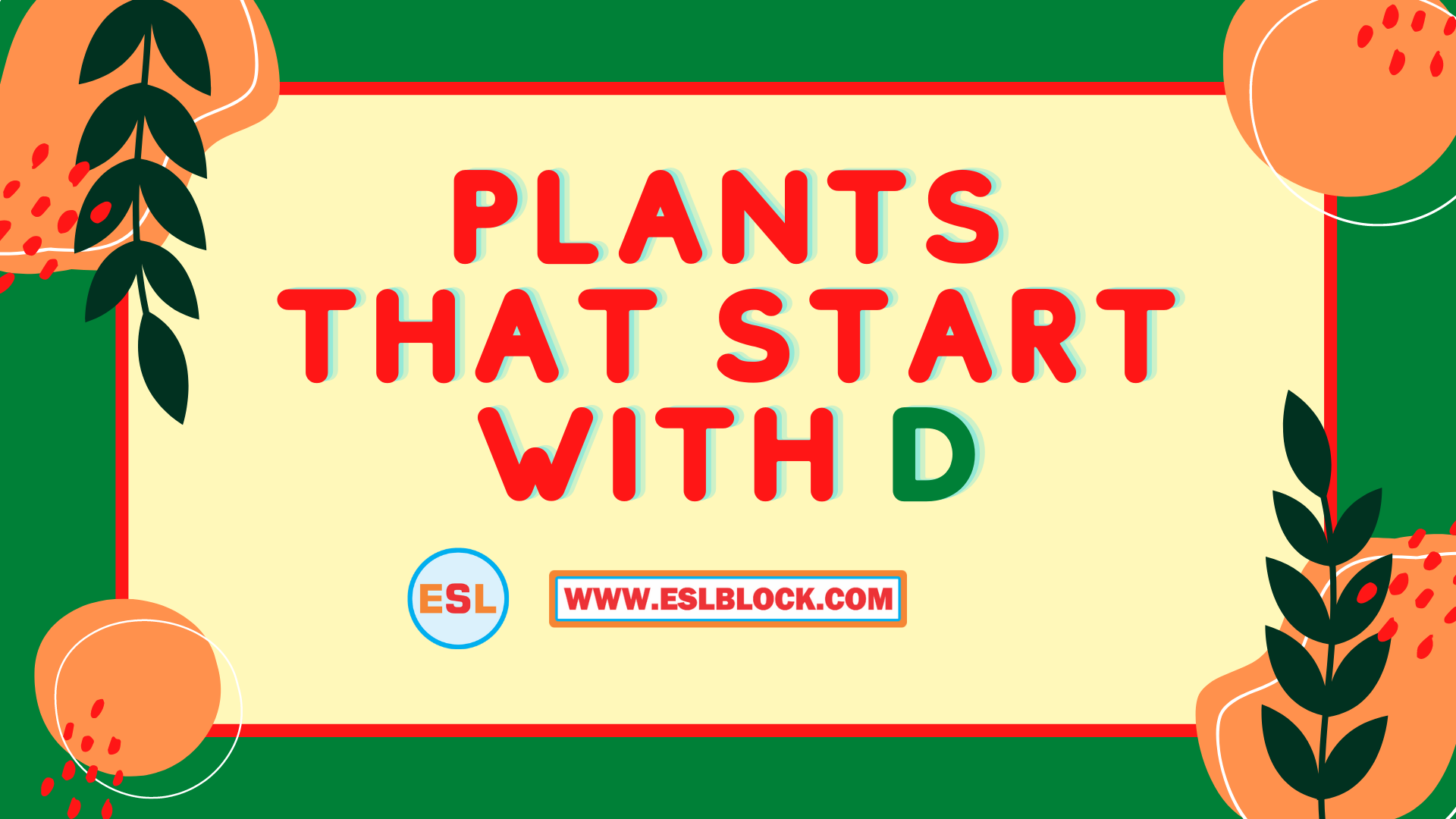Plants that begin with D offer a diverse and fascinating array of species, each with its unique characteristics and contributions to the natural world. From the majestic Dawn Redwood to the delicate Daisy, this botanical journey unveils the hidden wonders of the plant kingdom.
From medicinal properties to ecological significance, plants starting with D hold a wealth of knowledge waiting to be explored. Join us as we delve into their captivating world, uncovering the beauty, utility, and ecological importance of these botanical gems.
Medicinal Uses of Plants Beginning with ‘D’: Plants That Begin With D

The plant kingdom holds a treasure trove of medicinal wonders, and those beginning with the letter ‘D’ are no exception. From ancient remedies to modern-day treatments, these plants have played a vital role in healing practices across cultures.
Their medicinal properties stem from the unique compounds they contain, many of which have been scientifically validated for their therapeutic effects.
Dandelion (Taraxacum officinale)
- Known for its diuretic and detoxifying properties, dandelion root has been traditionally used to support liver and gallbladder function.
- Its leaves are rich in vitamins and minerals, making them a valuable addition to salads and other culinary preparations.
Devil’s Claw (Harpagophytum procumbens)
- A traditional remedy for pain and inflammation, devil’s claw has been shown to inhibit inflammatory enzymes and reduce joint pain.
- Its active compounds, harpagosides, are believed to be responsible for its analgesic and anti-inflammatory effects.
Digitalis (Digitalis purpurea)
- A potent cardiac glycoside, digitalis has been used for centuries to treat heart failure and irregular heart rhythms.
- Its active compound, digoxin, increases the force and regularity of heart contractions, making it a valuable medication for managing heart conditions.
Dill (Anethum graveolens)
- Dill seeds have carminative properties, helping to relieve gas and indigestion.
- They also contain essential oils that have antimicrobial and antispasmodic effects.
Dogwood (Cornus spp.)
- The bark of dogwood trees contains compounds that have astringent and anti-inflammatory properties.
- It has been traditionally used to treat diarrhea, dysentery, and other digestive ailments.
Ecological Importance of Plants Starting with ‘D’

Plants that begin with the letter ‘D’ play significant ecological roles in various ecosystems worldwide. These plants contribute to ecosystem stability, provide resources for other organisms, and support biodiversity conservation. Their ecological functions are crucial for maintaining healthy and resilient ecosystems.
Nutrient Cycling
- Many plants starting with ‘D’, such as dandelions and daisies, are pioneers in disturbed areas. They colonize bare soil and facilitate the establishment of other plant species, initiating the process of ecosystem restoration.
- Plants like daylilies and delphiniums accumulate nutrients in their tissues, enriching the soil for other plants and contributing to nutrient cycling.
Pollination and Seed Dispersal, Plants that begin with d
- Plants such as dahlias and delphiniums produce nectar and pollen, attracting pollinators like bees and butterflies. These pollinators play a crucial role in the reproduction of many other plant species, maintaining genetic diversity and ecosystem balance.
- Plants like dandelions and daisies have lightweight seeds with structures that aid in wind dispersal. This dispersal mechanism allows them to colonize new areas and establish new populations, contributing to species resilience and genetic diversity.
Habitat and Food Source
- Plants like daylilies and delphiniums provide shelter and nesting sites for insects, birds, and small mammals. Their dense foliage creates microhabitats that support diverse wildlife.
- Many plants starting with ‘D’ are important food sources for herbivores, such as deer and rabbits. Their leaves, stems, and flowers provide essential nutrients for these animals, maintaining ecosystem food webs.
Soil Stabilization and Erosion Control
- Plants like dandelions and daisies have extensive root systems that help stabilize soil and prevent erosion. Their deep roots anchor the soil, reducing soil loss and protecting watersheds.
- Plants like daylilies and delphiniums have dense foliage that intercepts rainfall and reduces the impact of raindrops on the soil surface. This helps prevent soil erosion and maintain soil health.

Within the botanical realm, plants beginning with the letter ‘d’ are as diverse as the ecosystems they inhabit. One such plant, the viva italia tomato plant , stands out for its exceptional culinary qualities. Its plump, juicy fruits boast a vibrant red hue and a sweet, tangy flavor that adds zest to countless dishes.
Beyond the viva italia tomato plant, the world of ‘d’ plants extends to include daisies, daffodils, and the delicate forget-me-nots, each contributing its own unique beauty and ecological significance to the tapestry of life.
Among the many plants that begin with the letter “d,” one notable species is the delicate guppy grass (Najas guadalupensis). This aquatic plant thrives in both tropical and subtropical regions and is often used in aquariums as a natural decoration and hiding place for small fish.
If you’re considering adding guppy grass to your aquatic ecosystem, here’s a detailed guide on how to plant and care for this beautiful plant. Guppy grass is a versatile plant that can be propagated through cuttings or by dividing the plant itself.
With proper care, this easy-to-grow species can add a touch of greenery and natural beauty to your aquatic environment.
The realm of plants is vast, encompassing a diverse array of species. Among these, plants that begin with the letter “d” include daisies, daffodils, and dandelions. These plants adorn our gardens and meadows with their vibrant hues and delicate fragrances.
Interestingly, the automotive industry has also embraced the letter “d” in its nomenclature. For instance, the seohan auto usa plant 1 is a testament to the technological advancements in the field of automobile manufacturing. Returning to the world of botany, plants that begin with “d” continue to captivate us with their beauty and ecological significance.